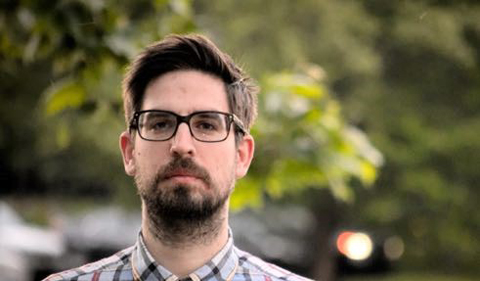
Dr. Marcel Bischoff
The Mathematics Department welcomes Dr. Marcel Bischoff, who starts as Assistant Professor this fall.
His NSF-funded research involves finding models for symmetries in quantum field theory, which combines the principles of quantum physics and the theory of special relativity, with potential application for quantum computing. Most recently, he was a post doc and assistant professor at Vanderbilt University.
Bischoff earned a Ph.D. in Mathematics at the University of Rome “Tor Vergata.” His Ph.D. thesis was “Construction of Models in low-dimensional Quantum Field Theory using Operator Algebraic Methods,” supervised by Prof. Roberto Longo. He also earned a Diploma in Physics at the Georg-August-Universität Göttingen. His diploma thesis: “On the Pole Structure of Higher Correlation Functions in Globally Conformal Invariant Quantum Field Theory” (in german) supervised by Prof. Karl-Henning Rehren.
His research interests focus on operator algebras, in particular subfactors; algebraic quantum field theory, in particular conformal field theory; and tensor Categories. His research is supported by the NSF Grant DMS-1700192 Quantum Symmetries and Conformal Nets.
Grant Abstract: Symmetries, which can be mathematically described by groups, play an important role in science. In quantum physics, the fundamental theory of physics at small scales, operator algebras provide a mathematical framework to study quantum systems and their symmetries. To describe quantum particles and matter in low dimensions (for example, on a thin layer) one needs a generalization of symmetry that goes beyond groups, often referred to as quantum symmetries. A main focus of this project is to find models realizing such symmetries in quantum field theory, which combines the principles of quantum physics and the theory of special relativity. The goal is to use the rich interplay between operator algebras and quantum field theory via conformal nets and to better understand possible quantum symmetries in mathematics and low-dimensional physics. One potential application is topological quantum computing, where the goal is to use quantum operations coming from non-trivial quantum symmetries to perform computations.
Conformal nets give rise to interesting quantum symmetries in terms of subfactors and unitary modular tensor categories. The project will focus on three main directions. First, the principal investigator will extend the understanding of boundaries or defects between conformal nets, generalize the abstract description of defects in terms of braided subfactors, and explore the relation to Jones’ planar algebras. The second project focus is to provide new structural results and examples of rational conformal nets realizing the quantum doubles subfactors. Lastly, the principal investigator will develop methods for using operator-algebraic techniques to construct conformal nets from their quantum symmetries and give relations between the operator algebraic approach of conformal nets and the purely algebraic approach of vertex operator algebras.



















Comments